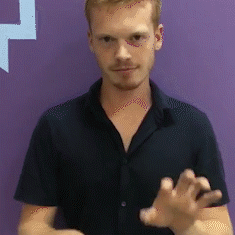Mind the gap
Revitalisation of old industrial spaces in Lviv.
JAM FACTORY case
JAM FACTORY case
INTRO
INTRO
After the eager industrialization of the Soviet Union came to a rest in the 90s, working class areas in Lviv are filled with empty factory buildings causing a sense of urban blight. Jam Factory is a revitalization project aiming at offering new cultural life to a historic factory building in the district of Pidzamchè. But the project risks pushing the local people out through gentrification, if necessary measures are not taking into consideration.
After the eager industrialization of the Soviet Union came to a rest in the 90s, working class areas in Lviv are filled with empty factory buildings causing a sense of urban blight. Jam Factory is a revitalization project aiming at offering new cultural life to a historic factory building in the district of Pidzamchè. But the project risks pushing the local people out through gentrification, if necessary measures are not taking into consideration.
CHAPTER 1. Old is the new New
Located in the post-industrial area of Pidzamche, Jam Factory will by its completion in 2020 be an art center facilitating exhibitions, a theater, movie screenings, concerts, a bar, and local meeting spots for the art interested citizens of Lviv. The project aims to revitalize the heritage protected building as well as the local district afflicted by social issues, poverty, and lack of urban restoration.
Located in the post-industrial area of Pidzamche, Jam Factory will by its completion in 2020 be an art center facilitating exhibitions, a theater, movie screenings, concerts, a bar, and local meeting spots for the art interested citizens of Lviv. The project aims to revitalize the heritage protected building as well as the local district afflicted by social issues, poverty, and lack of urban restoration.
 |  |  |
 |  |  |
Currently the Jam Factory is run by project director, Bozhena Zakaliuzhna, Jam Factory has already started hosting cultural events and projects for both the local community and Lviv's art enthusiasts.
Bozhena is also a director of the Harald Binder Enterprises and she has previously worked with activistic art projects and cultural management.
Bozhena is also a director of the Harald Binder Enterprises and she has previously worked with activistic art projects and cultural management.
BOZHENA ZAKALYUZHNA
Director of Jam Factory

The project was initially launched in 2015 when the castle-looking factory building was bought by Austrian historian Harald Binder, who is also the sole funder of the development project through the non-commercial Harald Binder Cultural Enterprises.
Photo: Liza Kuznetsova / The Ukrainians
Photo: Liza Kuznetsova / The Ukrainians
Also being the founder of the Center For Urban History, a research center in Lviv, Harald Binder's interest in the history of the region is highly present in the revitalization project.
The old factory building tells yet unknown stories of Ukraine's past, the evolution of Lviv, and the local community through the times. It's a history being traced as the art centre develops.
The old factory building tells yet unknown stories of Ukraine's past, the evolution of Lviv, and the local community through the times. It's a history being traced as the art centre develops.
CHAPTER 2. Molded by history
"The history of a building is an asset and a burden"
Build in the late 19th century, Jam Factory is a unique example of the "fin de siecle" neo-gothic style. For passers-by it resembles more of a castle than what it originally was – a distillery factory. Back then it was named after its founder "Kronik and Son" (1872).
Through the course of history the function and the building itself have changed. During the later Soviet period, the complex was turned into a factory producing jam and jarred goods. Today local historians are trying to perceive the symbolic importance of the building within the history of Lviv.
In the age of the foundation of the Jam Factory Pidzamchè was an independent village. During Industrialization roads were built and factories were founded. Most of them were distillery factories, since taxes were lower than in the city itself. Back then the district was scarred by alcoholism, fights, crime and unemployment.
By 1931 Pidzamchè became part of the city of Lviv. In the years to come, during the Second World War, very little is known about the district, which was turned into a Jewish ghetto.
By 1931 Pidzamchè became part of the city of Lviv. In the years to come, during the Second World War, very little is known about the district, which was turned into a Jewish ghetto.
During Soviet period the old reputation of the area changed. The press abandoned the dark picture from the past and focused on the benefits of the industrialisation as well as its positive effects on the district due to the Soviet leadership.
EUGENE POLYAKOV
Historian
The past of Pidzamchè and the Jam Factory still has lasting effects on the life and identity of locals. Hence the question is, to what extent does social responsibility have to be taken, in order to successfully revitalize an area?
CHAPTER 3. Revitalizing not gentrificating
1. Lviv bakery plant «Cereal plant»
Shevchenko str. 200
2. LEM station
Vitovskogo str. 57
3. !FESTrebublic
Starozeneskaya str. 24-26
4. Jam Factory Art Center
Bogdan Khmelnitsky str. 124
5. ZAVOD REMA
Radio electronic medical apparatus plant
Zavodska str. 31
6. Lviv Experimental Ceramic and Sculpture Factory
Muchna str. 32
7. Business Park «Promyslovyi»
Promyslova str. 50/52
9. Lviv ceramic plant
Syaivo str. 12
10. Lvivprylad
Lviv IT School Sakharova str. 35
Shevchenko str. 200
2. LEM station
Vitovskogo str. 57
3. !FESTrebublic
Starozeneskaya str. 24-26
4. Jam Factory Art Center
Bogdan Khmelnitsky str. 124
5. ZAVOD REMA
Radio electronic medical apparatus plant
Zavodska str. 31
6. Lviv Experimental Ceramic and Sculpture Factory
Muchna str. 32
7. Business Park «Promyslovyi»
Promyslova str. 50/52
9. Lviv ceramic plant
Syaivo str. 12
10. Lvivprylad
Lviv IT School Sakharova str. 35

In post-soviet Lviv many of the industrial zones has lost their purpose, leaving empty factory buildings across different districts, as the map shows. Using these old, empty remains of industrial times for new cultural functions have the opportunity to revitalize not just the building itself but the old workers quarters as well.
According to a historian Eugene Polyakov the revitalization of old, unused buildings can cause a feeling of pride for the district and thereby enforce an identity for the locals and their area.
But there is a fine line between beneficial urban revitalization and gentrification, where local populations are replaced by a more affluent demographic causing increased costs on rent and goods. A line which the Jam Factory must learn to walk, if the local people are to stay in Pidzamche.
According to a historian Eugene Polyakov the revitalization of old, unused buildings can cause a feeling of pride for the district and thereby enforce an identity for the locals and their area.
But there is a fine line between beneficial urban revitalization and gentrification, where local populations are replaced by a more affluent demographic causing increased costs on rent and goods. A line which the Jam Factory must learn to walk, if the local people are to stay in Pidzamche.
Bozhena Zakaliuznha hopes on the Jam Factory revitalization project
Roman Matys doubts about the effects of Jam Factory
Being located in a poor, working class environment, the organizers behind the Jam Factory are aware of their influence on the future of the Pidzamchè district.
According to a project manager Bohdan Hrytsiuk, understanding the local cultural code and incorporating it into the development process is vital if gentrification is to be avoided - or at least softened.
In an attempt to let the local culture inside the walls of the future art center, Bohdan Hrytsiuk has initiated a Tell your story project, where a sociologist and himself interview the former workers on the factory about their memories of the place.
According to a project manager Bohdan Hrytsiuk, understanding the local cultural code and incorporating it into the development process is vital if gentrification is to be avoided - or at least softened.
In an attempt to let the local culture inside the walls of the future art center, Bohdan Hrytsiuk has initiated a Tell your story project, where a sociologist and himself interview the former workers on the factory about their memories of the place.

They also ask locals to paint a mental map of the district, which in all will create the foundation of a future art installation. "It is site specific art. It will be based on the locals and their story. In that way it will be easier for them to understand", Bohdan says. During his research process the gap between the artistic, revitalization project and the local community became clear to Bohdan.
"Some of them told me that they thought they were going to lose their apartment, when they heard about the Jam Factory project. They were afraid".
Bohdan and his colleagues have since done their best to inform the citizens of the district to avoid such unfortunate misunderstandings. "We try to communicate our project in the newspapers and on Facebook, so that the general public and locals know what we are doing".
CHAPTER 4. Change to come
Once the old factory is transformed into a large art centre, Jam Factory will invite international artist, host modern theatre performances, hold concerts, and strive to be a leading facilitator for contemporary art with both local and global perspective.
Once the old factory is transformed into a large art centre, Jam Factory will invite international artist, host modern theatre performances, hold concerts, and strive to be a leading facilitator for contemporary art with both local and global perspective.
Using a temporary space next to the historic factory building, Bozhena and her team have since 2016 been facilitating a small predecessor to the future Jam Factory Art Centre, until its opening in 2020. The Jam Factory is contributing to the first small signs of change in Pidzamché by already hosting film screenings and literary events, and thereby attracting an art interested clientele.

Team of the project:
Jakob Nielsen,
Ekaterina Kharbedia,
Johanna Hirzberger,
Anna Yutchenko
Mentor: Zhanna Ozirna
Jakob Nielsen,
Ekaterina Kharbedia,
Johanna Hirzberger,
Anna Yutchenko
Mentor: Zhanna Ozirna










